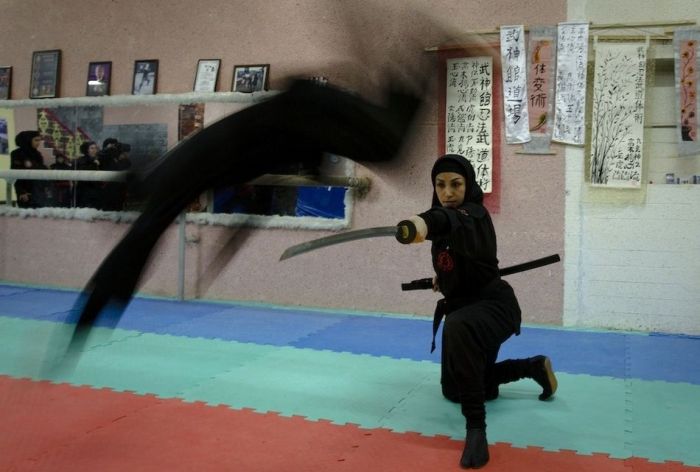|
|
Iranian Ninja Girl
|
The ninja's adaption of kites in espionage and warfare is another subject of legends. Accounts exist of ninja being lifted into the air by kites, where they flew over hostile terrain and descended into, or dropped bombs on enemy territory. Kites were indeed used in Japanese warfare, but mostly for the purpose of sending messages and relaying signals. Turnbull suggests that kites lifting a man into midair might have been technically feasible, but states that the use of kites to form a human "hang glider" falls squarely in the realm of fantasy. However, references to man-lifting kites do exist in works dating to the relevant era and before, including Sun Tzu's The Art of War.
• Kuji-kiri
Kuji-kiri is an esoteric practice which, when performed with an array of hand "seals" (kuji-in), was meant to allow the ninja to enact superhuman feats.
The kuji ("nine characters") is a concept originating from Taoism, where it was a string of nine words used in charms and incantations. In China, this tradition mixed with Buddhist beliefs, assigning each of the nine words to a Buddhist deity. The kuji may have arrived in Japan via Buddhism, where it flourished within Shugendō. There too, each word in the kuji was associated with Buddhist deities, animals from Taoist mythology, and later, Shinto kami. The mudrā, a series of hand symbols representing different Buddhas, was applied to the kuji by Buddhists, possibly through the esoteric Mikkyō teachings. The yamabushi ascetics of Shugendō adopted this practice, using the hand gestures in spiritual, healing, and exorcism rituals. Later, the use of kuji passed onto certain bujutsu (martial arts) and ninjutsu schools, where it was said to have many purposes. The application of kuji to produce a desired effect was called "cutting" (kiri) the kuji. Intended effects range from physical and mental concentration, to more incredible claims about rendering an opponent immobile, or even the casting of magical spells. These legends were captured in popular culture, which interpreted the kuji-kiri as a precursor to magical acts.
|
|









